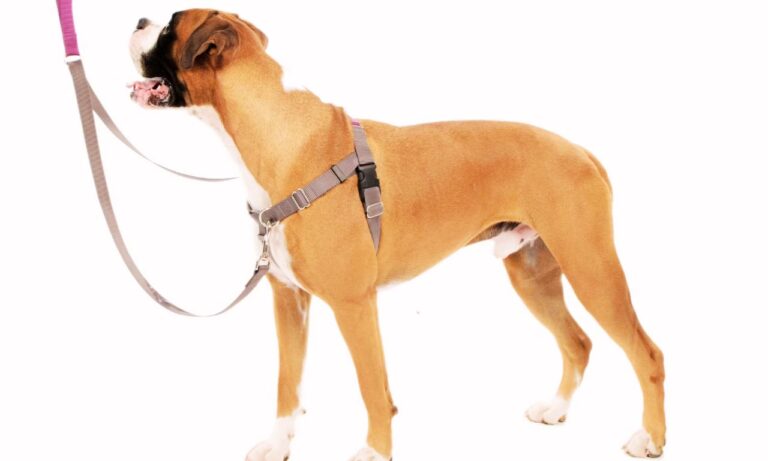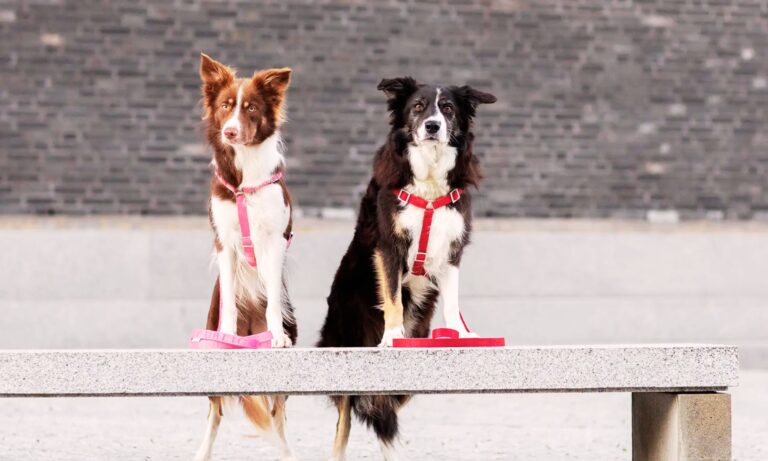When it comes to training and managing a beloved canine companion, many pet owners are continually searching for tools that are both effective and humane. Over the years, training devices have evolved, and many of today’s solutions incorporate advanced technology to improve communication between humans and dogs. In recent times, the training industry has witnessed a significant surge in the popularity of Electronic Dog Collars, as they offer a range of features to suit various training needs. For effective training techniques, vibration collars that works for barking can be beneficial for beginners exploring advanced options.
Blog Highlights
ToggleWhy Use Modern Training Tools?
These innovative devices combine multiple stimulation methods, allowing owners to choose from shock, vibration, and even calming options, thereby tailoring training sessions to each dog’s personality and temperament.

As pet behavior experts continue to explore new strategies for positive training, the role of these advanced devices is being recognized for their potential to aid in obedience, recall, and behavior modification. For a focused approach to noise control, bark collars for dogs offer good training solutions for beginners.
The purpose of this guide is to equip you with all the essential knowledge needed to understand the technology behind these tools, compare the available options, and learn the best practices for safe use. Vet One clinic collar 25 cm is ideal for ensuring proper fit and comfort as you build your dog training equipment list.
Guiding Principles of Training Tools
In today’s diverse market, choosing the right device is a crucial step toward achieving effective training outcomes without compromising your pet’s well-being. Many trainers and pet owners report that the success of any training method depends on combining modern technology with traditional positive reinforcement techniques. If you’re considering electronic options, e‑collars for dogs enhance your dog training equipment list.

Dog training is a journey that benefits from the best tools available, but it also demands patience, consistency, and empathy. The integration of advanced technology in training tools marks a significant step forward. For direct comparisons in the market, Spoton vs Halo help beginners choose the best collar system.
What is the Technology Behind Electronic Dog Collars?
Modern dog training has embraced technology that once seemed futuristic. Many devices now incorporate advanced electronics to create multi-functional tools. In this section, we will dive into the inner workings of these devices, exploring the sensors, microprocessors, and connectivity features that make them both effective and safe for dog training.
1. Innovative Hardware Design
At the heart of many of these advanced training tools are Electronic Dog Collars, which combine technology with behavioral science to offer precise control. Modern iterations now incorporate features such as adjustable stimulation levels and automatic shut-off mechanisms, ensuring that training sessions remain controlled and safe.

Advances in circuitry and microchip design mean that these collars can be programmed to deliver very specific signals based on a dog’s behavior. Use practical options for everyday walks with dog collars for walking that helps in comfortable training.
2. Wireless Dog Fence Collars Integration
Some models even integrate with wireless dog fence collars, allowing owners to create a secure boundary for their pets without needing to install cumbersome physical barriers. These systems often work in tandem with digital mapping software, enabling the collar to interact with virtual boundaries and alert owners if their pet strays too far.

Furthermore, advancements in GPS dog collars have enabled real-time tracking of your pet, ensuring that location data is always at your fingertips—an invaluable feature for active or escape-prone dogs. For reliable tracking, you can use tractive GPS pet tracker for tech‑savvy dog owners.
3. Durability and Design
The technological leap has not only made these devices more precise but also more user-friendly. Modern collars now feature intuitive interfaces, allowing for quick adjustments to the stimulation levels. You can use innovative tracking technology of Garmin alpha 100 tracking system, which offers a modern approach to dog training equipment.

Many models are now compatible with smartphone applications, meaning that a trainer or pet owner can monitor performance metrics, adjust settings, and even set training schedules remotely. In addition, built-in rechargeable batteries and energy-saving modes extend the life of the device, making them practical for extended training sessions and long outings.
4. GPS Dog Collars for Enhanced Tracking
Beyond the hardware, the software algorithms integrated into these devices play a critical role in ensuring that the stimulation is applied correctly. These algorithms take into account factors such as the dog’s weight, size, and temperament, adapting the level of stimulation to suit the individual. Use advanced GPS systems of Garmin Alpha 100, designed for those starting with high‑tech training gear.

Safety protocols are built into the firmware to prevent accidental over-stimulation. Engineers continue to refine these systems, making them more responsive and accurate with each new model release.
Moreover, many of these devices are designed with durability in mind. They are built to withstand the rigors of outdoor activities, including exposure to water, dust, and extreme temperatures. Know about GPS if it works without wifi for advanced dog training equipment outdoors.
As a result, dog owners can rely on these tools during various activities, whether at the park, on hiking trails, or even during inclement weather. The commitment to safety and reliability is a key selling point for many of today’s training aids.
Exploring Different Types and Options of Dog Collars
The marketplace today offers a wide range of dog training devices designed to suit different training philosophies and needs. From devices that offer simple stimulation to those that provide complex multi-modal feedback, the range of available products is impressive and continues to expand as technology advances.
Diverse Training Methods
Many pet owners are choosing Electronic Dog Collars for their ability to combine multiple training methods into one compact device. Among the various options available, there are also specialized models such as E-collars for dogs that focus on delivering a specific type of stimulation, often emphasizing consistency and ease of use.

These collars come in various designs, with some focusing solely on providing a gentle tap while others can deliver more intense stimuli when needed.
Remote Dog Training Collars in Practice
Remote dog training collars are popular for their convenience and flexibility, allowing trainers to operate the device from a distance without needing to be physically close to the pet. This remote functionality can be especially beneficial in outdoor environments or during off-leash training sessions where proximity is not always possible. If your remote control is acting up, you should learn to reset Mini Educator remote to quickly resolve issues.

Alternative Stimulation Choices
When considering the impact on the animal, many trainers appreciate the option of shock collars for dogs, which can deliver a sharp correction in response to undesirable behavior. However, their use requires careful consideration and a deep understanding of canine behavior to avoid misuse.
For this reason, many experts recommend using such tools only as a last resort or under the guidance of a professional trainer. Compare different educational tools of Mini Educator vs Dogtra, helping you choose the right training approach.
Gentle Communication Options
For dogs that are more sensitive or have specific training needs, vibration dog collars have become a favored choice, providing a less intrusive method of communication. This alternative offers a gentle nudge instead of a harsh shock, catering to a wide range of training scenarios.
Similarly, for pet owners troubled by excessive barking, bark collars are designed to detect vocal activity and deliver a timely response to curb unwanted noise without causing distress. For an insightful model comparison, see if Dogtra 1900s vs 280C best fits your training needs.
Beyond these primary functions, many collars now come with additional features that allow customization of the training experience. Some models incorporate programmable settings, enabling owners to tailor the intensity and duration of the stimulation based on their dog’s progress.
This flexibility is critical in ensuring that training remains a positive experience, as it allows for gradual adjustments that can help a dog adapt to new behaviors over time. Ensure seamless synchronization by knowing Sync Dogtra 1900s Collar, vital for maintaining an effective dog training equipment list.
Enhanced Comfort and Fit
Advances in design have also led to improvements in comfort and fit. Manufacturers pay close attention to ergonomics, ensuring that the collars are adjustable, lightweight, and made of materials that are both durable and gentle on the dog’s skin.

The ultimate goal is to create a tool that is effective yet unobtrusive, one that enhances communication without becoming a source of stress for the animal. For dogs with thicker skin, see collars for thick skin dogs, ensuring a secure yet comfortable fit.
With such a diverse array of options available, it is important to compare models carefully. Look for features such as waterproofing, battery life, range, and ease of programming. Reading reviews and consulting with experienced trainers can provide further insight into which device might work best for your unique situation.
Whether you opt for a more technologically advanced model or a simpler design, the key is to choose a collar that aligns with your training objectives and the individual temperament of your dog. For dedicated Rottweiler training, use dog collars for Rottweiler for handling powerful dogs.
Evaluating Pros, Cons, and Considerations of E-Collars
When weighing the benefits and drawbacks of different training devices, it is crucial to consider both the technical specifications and the practical implications of their use. In this section, we examine the pros and cons of various models, looking at both performance and ethical considerations so that you can make an informed choice.
Versatility and Multi-functionality
Modern models of Electronic Dog Collars often provide a blend of advanced features and user-friendly interfaces that appeal to both novice and experienced trainers. Many owners appreciate the versatility of these devices, as they offer multiple stimulation methods—from a quick shock to a gentle vibration or even tone-only cues—all from one unit.

This versatility means that the same device can be adapted to suit different training phases or even different dogs in the same household. For dog owners interested in technology, learn using training collars for dogs.
Remote Functionality and Integration
Owners should also consider feedback from other users and experts, as well as comprehensive reviews, to make an informed decision about which device best suits their training style. One of the appealing features of these devices is the integration with GPS dog collars, which adds an extra layer of safety by enabling real-time tracking of a dog’s whereabouts.
This feature is particularly useful for owners who allow their dogs off-leash or in open areas where wandering might be a concern. The option of using remote dog training collars offers a convenient means to correct behavior from a distance, and many trainers find this particularly beneficial in outdoor settings. For those with Shiba Inu, learn to wear collars on Shiba Inu for training ease.
However, it is important to note that the effectiveness of these devices depends largely on the owner’s ability to use them correctly. Improper use can lead to confusion or even increased anxiety in dogs, which is why proper training for the owner is as critical as training for the pet.
Shock Collars for Dogs: A Cautious Approach
That said, the use of shock collars for dogs remains a topic of debate among experts; while they can provide quick responses, improper use may lead to adverse emotional effects in some animals. For powerful breeds, explore Best Collars for Cane Corso, engineered for strength and durability.

Many trainers suggest that shock should only be used in extreme situations and always in combination with positive reinforcement techniques. For many pet owners, this is why exploring alternatives—such as vibration or tone only options—has become increasingly popular.
Weatherproof and Energy Efficiency
In many cases, owners look for devices that are built to withstand various weather conditions, which is where waterproof e-collars come into play, ensuring that training sessions can proceed regardless of environmental challenges.
These robust models are especially useful for owners who live in areas with high humidity or frequent rain. Along with durability, many devices now also offer enhanced battery life and energy efficiency, meaning that they can be used reliably over long periods without frequent recharging or battery replacements. If comfort is a priority, explore the Most Comfortable Dog Collar, which can enhance your training experience.
Tone Only Dog Collars for Gentle Corrections
For those who prefer a subtler approach, tone only dog collars deliver auditory signals without physical stimulation, thereby offering a gentler alternative for behavior correction. This option can be ideal for dogs that are particularly sensitive or for situations where a non-invasive reminder is all that is needed.
In addition, some models come equipped with long range dog training collars that provide extended connectivity, making them ideal for training in large, open areas or for dogs with high activity levels. Ensure accuracy with the Size Chart for Dog Collars, a valuable tool for every beginner’s dog training equipment list.

Furthermore, the convenience of rechargeable dog collars means that owners do not have to constantly replace batteries, adding to the overall efficiency and sustainability of the training process.
When evaluating the pros and cons, it is important to consider not only the technical features but also the ethical implications of how the device is used. Many trainers emphasize that no device should replace patience, understanding, and consistent positive reinforcement. For quick styling tips, check out Slip‑On Collar, an easy‑to‑use option for beginners.
Ensuring Safe Use and Effective Training Applications
Safety is paramount when using any training device, and understanding the correct methods to apply these tools is essential for achieving positive results. In this section, we discuss best practices for using training devices and offer tips to ensure that every session is both safe and effective for you and your pet.
Pre-use Preparation
Proper use of Electronic Dog Collars requires a balanced approach that combines technological precision with compassionate training methods. One of the first steps in ensuring safe use is to thoroughly read the manufacturer’s instructions and understand every feature of your device before applying it in training sessions. For a unique style, consider Unique Dog Collars for Small Dogs, ideal for adding variety to your dog training equipment list.

This preparation includes familiarizing yourself with the various stimulation modes and knowing when and how to use them to communicate with your dog effectively. For instance, incorporating features from wireless dog fence collars can help create a secure training environment, reducing the risk of your pet wandering too far during outdoor sessions.
It is important to know the best Types of Dog Collars for Walking & always test the collar on a short, controlled walk before relying on it in less predictable circumstances. Making sure that the collar fits snugly yet comfortably is critical; an ill-fitting device may not deliver the intended signals or could even cause discomfort to your dog.
Fitting and Adjustments
Owners should ensure that any device, including e-collars for dogs, is properly fitted and adjusted to suit the size and breed of the animal. A well-fitted collar will not only provide accurate stimulation but will also prevent skin irritation and other discomforts.
It is advisable to consult with a professional trainer or veterinarian to determine the proper settings and fit for your particular pet. Regular checks and adjustments are essential as your dog grows or if there are changes in their behavior or health status. Address safety issues with shock collars if they are bad for dogs, know before using it.
Some trainers find that using vibration dog collars can offer a less invasive form of communication, providing an alternative when a milder correction is needed. This method is often recommended for younger dogs or those that exhibit a high sensitivity to physical stimuli.
Additionally, bark collars are designed to manage excessive vocalization by detecting sound levels and delivering a prompt response. When used correctly, these devices can help modify behavior without resorting to more forceful measures.
Waterproof E-Collars for All Conditions
Ensuring that your device is a waterproof e-collar can prevent damage during training sessions conducted in wet conditions, thereby prolonging the device’s lifespan and effectiveness.
Whether you are training in the rain or near water, a waterproof design provides both durability and reliability, ensuring that the device continues to function as intended even when exposed to moisture. Know if collars are uncomfortable for dogs before using them for training purposes.

It is also essential to remember that technology is only one component of a successful training program. Consistency, patience, and positive reinforcement are indispensable in shaping a dog’s behavior.
Effective training sessions are typically short, frequent, and paired with rewards that motivate your pet. Monitoring your dog’s responses carefully and adjusting your techniques accordingly is key to maintaining a positive training environment.
Combining Technology with Traditional Training
In the hands of a knowledgeable owner, Electronic Dog Collars can be a valuable asset for reinforcing desired behaviors while minimizing stress on the animal. Safety protocols—such as using the lowest effective stimulation level and never leaving the collar on for extended periods—should always be followed.
In addition, scheduling regular breaks during training sessions and closely observing your dog’s body language can help ensure that the device is used in a way that promotes learning without causing anxiety. Ensure proper fit with Vet One Clinic Collar 15 cm, a resource for beginners seeking accurate sizing.
How To Choose the Right E-Collar Type for Your Dog?
Selecting the best training device for your canine companion involves careful research, personal reflection, and sometimes professional guidance. Every dog is unique, and what works well for one animal might not be as effective for another. Consider factors such as the dog’s temperament, the training environment, and your own experience when making a choice. Ensure durability in outdoor conditions with Are Dog Shock Collars Waterproof?, essential for active pet owners.
Personalized Device Selection
Investing in Electronic Dog Collars can be a worthwhile decision if used responsibly and in line with established training principles. It is important to take the time to evaluate the various features that each model offers, and to consider how those features align with your training goals. Learn breed‑specific training tips with Using Training Collars for Dogs – Sarabi Breed.

Whether you are training a high-energy puppy or a more reserved adult dog, the right device can provide an extra tool in your training arsenal that helps you communicate effectively with your pet.
Rechargeable Dog Collars for Eco-Friendly Training
For dog owners seeking convenience and sustainability, rechargeable dog collars offer the advantage of eliminating the frequent need for battery replacements. These models often feature modern charging systems and extended battery life, ensuring that your device is ready when you are. Moreover, the environmental benefits of a rechargeable system can be an added bonus for those looking to minimize waste. For large dogs, discover the benefits in Harness vs Collar for Large Dogs, which helps you choose the right control tool.
Long Range Dog Training Collars for Wide Open Spaces
If you live in an area where outdoor training over large spaces is common, opting for long range dog training collars can ensure that your dog remains within a controlled area without losing contact.
These devices typically feature enhanced connectivity ranges and more robust signal transmissions, which are invaluable when training in expansive environments. In addition, longer range connectivity often means that the device is built to handle more demanding outdoor conditions. Learn step‑by‑step procedures with the Sportdog Training Collar Instructions, ideal for those new to using training collars.
Tone Only Dog Collars for Subtle Training
Finally, for those who prefer a subtler approach, tone only dog collars provide clear auditory cues without the physical stimulus associated with other models, making them a popular choice for gentle training methods.
These collars focus on producing sounds that catch your dog’s attention and can be particularly useful when physical contact is either not advisable or desired. If you’re exploring advanced tracking systems, compare options in Sportdog vs Garmin, providing valuable insights for beginners.
When choosing a training device, it is also essential to consider the build quality, user interface, and overall design. Many devices are designed to be user-friendly, offering intuitive controls that make training sessions easier and more enjoyable.

Reading customer reviews and consulting with experienced trainers can provide valuable insights into the practical performance of these devices. Additionally, many manufacturers now offer warranties and customer support, ensuring that you have assistance if you encounter any issues with the device. Compare advanced subscription services by reading Tractive vs Fi, offering valuable insights for budget‑conscious beginners.
Before making a final purchase, consider trying out a demo if available, and always follow the manufacturer’s guidelines for fitting and operation. A proper fit is crucial not only for the device’s performance but also for the comfort and safety of your dog.
Remember that any training tool is only as effective as the training techniques used alongside it. Emphasize positive reinforcement and patience, as these are the cornerstones of effective dog training. While the technology behind these devices is impressive, the human element remains irreplaceable.
Final Thoughts
In conclusion, selecting and using the right dog training device requires a balanced understanding of technology, training philosophy, and—most importantly—your dog’s unique needs. Gain detailed insights into operating your equipment by consulting the Dogtra 1902s Manual, perfect for beginners.
Each option has its own merits and potential drawbacks, and no single device will work perfectly for every dog. As a pet owner, it is vital to approach training with patience, empathy, and a willingness to learn from both successes and setbacks.
The advancements in training technology have provided us with a broad range of tools, each designed to enhance communication and promote positive behavior in our canine companions. For clear operating instructions, refer to Dogtra Collar Instructions, which provide a straightforward guide for new users.
By staying informed and seeking professional advice when necessary, you can ensure that the training process is both safe and effective. Remember that while technology can be an excellent aid, it is the bond between you and your pet that truly makes training successful. Compare advanced models of Dogtra Edge vs Edge RT, which explains the benefits of each system in a clear manner.





